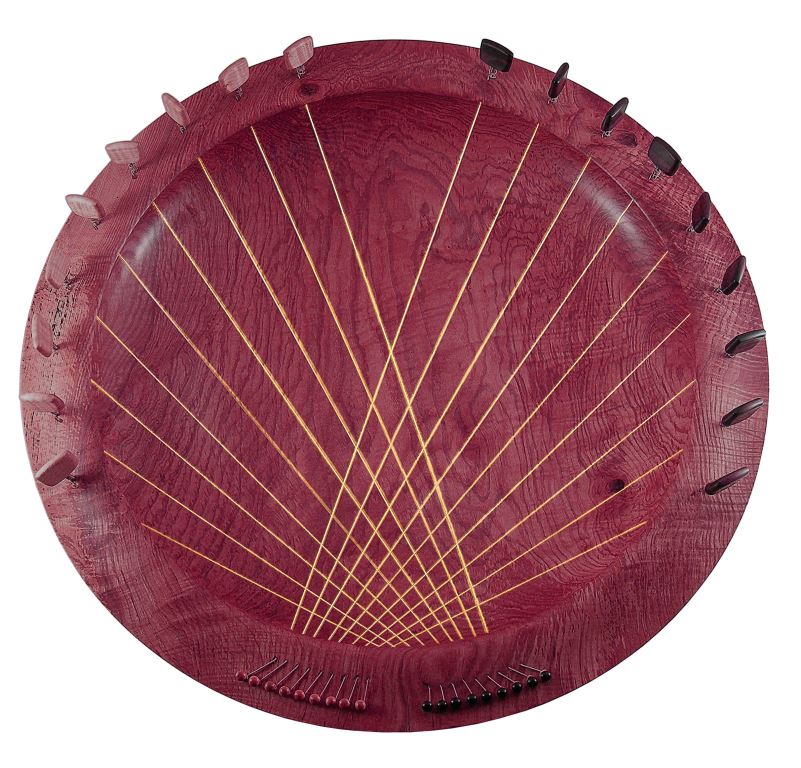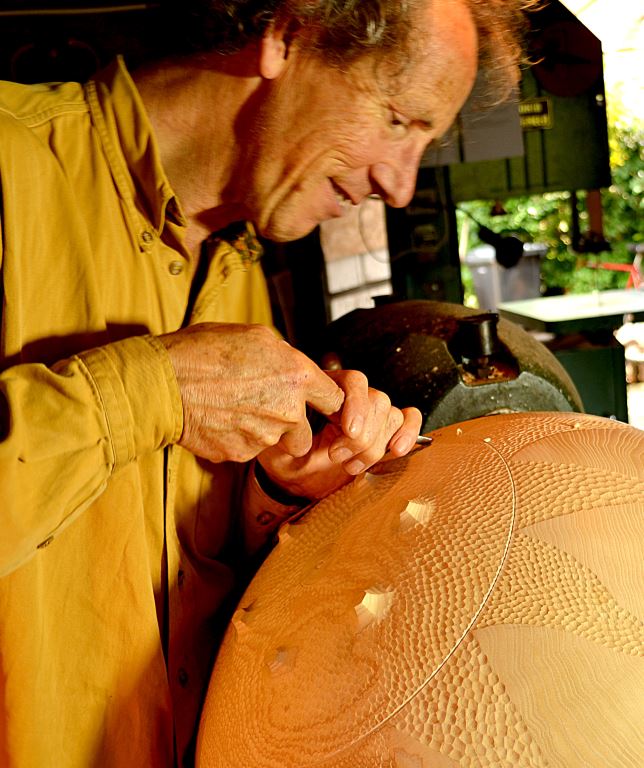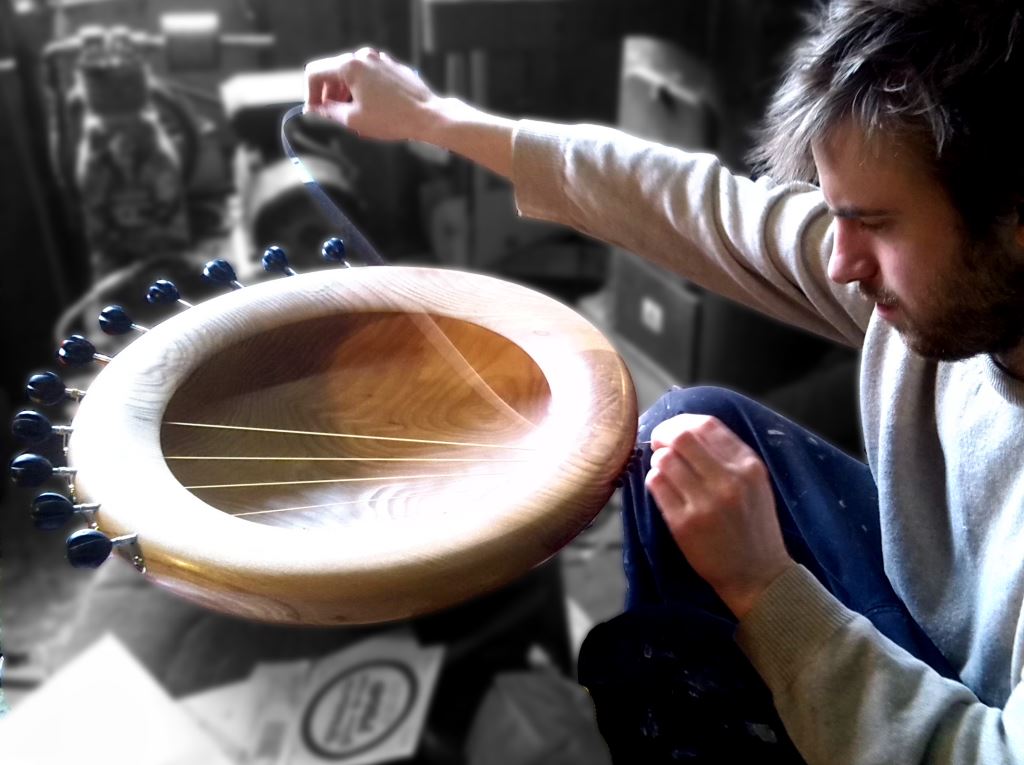Single News
Sounding Bowls: profound response in soul and body
“Seeking harmony of form is, for me, allegorical for seeking inner creative harmony and development,” says Tobias Kaye, inventor of the Sounding Bowl, a new kind of musical instrument which has all kinds of different uses from meditation to therapy. Now demand means that his business, Sounding Bowls, is expanding and looking for apprentices. Alexa Smith from Sounding Bowls explains the background.
BUCKFASTLEIGH (NNA) – A neo-natal intensive care resuscitation unit in France (“reanimation”): the therapist takes the Sounding Bowl and places it against the incubator so the sound and vibration run right through to the baby inside and starts to play. As the sound of the bowl echoes into their world, staff watch as the breathing of the infant deepens, then strengthens and the heartbeat steadies on the monitor screen. With clearly visible signs of tension leaving the baby, the staff relax.
The results of supportive healing that come from the simple little seven-string Sounding Bowl offer something few can put into words, especially as the severely premature baby, whose “vital signs were fading”, had already received every help that the hospital could offer. Since that first sounding, hundreds of babies in France have made a recovery with the support of a Sounding Bowl.
Sounding bowls first appeared to Tobias Kaye during an evening meditation in 1986. Unexpected and simple, the image was of a wooden bowl with a string stretched inside, but simple ideas in the right hands have the potential to become things of greatness.
During the months around this time Tobias had been living with the statement in The Portal of Initiation, the first mystery play by Austrian philosopher, social reformer and esotericist Rudolf Steiner, the founder of anthroposophy , describing how Lucifer was the inspiration for all the arts so far, “even the Christian great masters”, but that in the future it would be possible for art to be inspired by Christ. Questions around this – how an art inspired by Christ might differ from known art forms and what might characterise such an art – were growing in Tobias’s soul.
Tobias now began to investigate practically the technical and acoustic possibilities of fitting strings to wooden bowls. Deep and narrow bowls, wide and shallow, small and large-rimmed all added their suggestions. This pursuit resulted in discovering a family of acoustic Fibonacci curves allowing for tones and resonances within the bowls that are full of expressive sound. It also allowed a unique tuning system and an unusual flow of wall thicknesses to develop that underlie the success of the Sounding Bowls of today.
Therapeutic use
Early Sounding Bowls mostly went to art collectors and public exhibitions as an extension of Tobias’ previous work in wood turning of sculptural forms. But in 1991, when the National Health Service (NHS) bought a Sounding Bowl for use in a hospice which was pioneering music therapy in palliative care, the recognition of the Bowls shifted from being sculptural to instrumental.
It became apparent that the resonant nature of the acoustic curve, the tactile beauty and harmonious sound could touch deep aspects of those who played, offering an instinctive mirror of their fullest self, beauty and potential. Since then the bowls have continued to be used in the therapeutic arts in pioneering professional work of music therapists, doctors and healers.
A phrase used by many of the therapists astonished by their own results is simply: “Something is happening here.” Many have commented that while sound healing tools, such as gongs and bronze bowls, take a person outwards on a soul journey, the inner strings of a Sounding Bowl lead a person back into the centre of their own heart.
Therapists have found with advanced dementia sufferers in the UK and France, for example, that the more disassociated a person seems the more powerful their response to the Sounding Bowl is.
Patients who are deeply withdrawn from the world have been drawn out and in a few cases it has even happened that patients who are many months beyond speech capability have spoken meaningful words. One woman, for example, extended her hand to touch the bowl and said quite clearly to the therapist: “Don’t stop!”
By contrast, the patients whose sense of self spills over into the world with incessant crying out, even screaming are returned to a centred place of inner stillness. After 27 years in the field, Sounding Bowls continue to support hospital departments and private therapists reliably in a wide field of applications.
Workmanship of risk
The production of Sounding Bowls is very different to most modern manufacturing. In the latter, design comes before making; both the machine and the worker are simply charged with producing to the accepted design.
Today it is rare that the maker himself has control over the result. This is described as “workmanship of risk” by the former professor of furniture design at the Royal College of Art in London, David Pye, meaning that both the quality and the form of the finished item depend on the skills and focus of the maker.
Workmanship of risk enhances the result, which now becomes the carrier of the focus of the individual spirit, imbuing the made object with potential healing power. It intensifies the quality of the present moment – the workshop is less like a factory and more like a monastery through which spiritual intent enters everyday life.
Workmanship of risk also gives something to the maker whose abilities and whose presence of mind are developed through the encouragement and reward of the process itself. This is further enhanced by giving each maker choices over certain aspects of the design, individualising Sounding Bowls beyond their musical function into profoundly healing sculptures.
The growing demand for Sounding Bowls means that the business is expanding and looking for apprentices to train to become Sounding Bowl makers. It is a craft which requires good manual aptitude.
Tobias Kaye is keen to encourage potential applicants: “If you are interested to pursue a career in making musical instruments that bring changes into human lives, if you are flexible for a move to South Devon, UK, and if you have room in your life for a period of training that may last for up to a year, then Sounding Bowls would like to hear from you.”
END/nna/cva
Contact: Tobias Kaye, Harmony (at) SoundingBowls.com
Item: 150216-01EN Date: 16 February 2015
Copyright 2015 News Network Anthroposophy Limited. All rights reserved.



